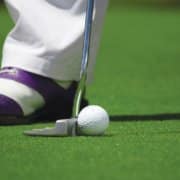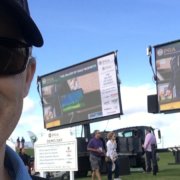Save Money on Lessons – Learn to Read Your Shots & Fix Yourself (Ep.4)
Hey guys super important episode today. I want to talk about how to read your golf shots.
Like I always say, physics don’t lie. Where the ball is going is determined by some very specific factors. I want you to learn how to read your shots, see what’s happening and reverse engineer what’s happening in your golf swing that causes things. It’s all about being able to fix yourself without leaning on an instructor every time you have a problem.
There are only two factors that determine the direction that a golf ball goes.
- The path that the club is traveling on as it impacts the golf ball. There are three options – the path of the club to be going straight down the target line, out to the right of the target, or swinging to the left of the target. tho
- Club face angle. This is the direction that the club face itself is pointing at impact. There’s only three options there as well – the face can be square (90°) or it could be open pointed out to the right or closed pointed to the left.
So you’ve got three options with the swing path three options with the face angle and those determined effectively nine different shots that you can hit directionally speaking.
Now I know there are different variations and there’s different extremes to those nine shots but those are the two factors that we’re considering.
So let’s talk about how to read your golf shots and how to understand whether it’s swing path or face angle. The fixes for those two things are very very different.
I’m gonna cut to the chase. 90% of where a golf ball goes is determined by face angle. It’s more complicated than that, but where the club face is pointing at impact determines where the ball goes.
Take a look at your divots to see which direction the club is traveling at impact. Then, look at where the ball flies to infer club face angle at impact. It’s honestly that simple…despite what you hear from everyone.
My advice is to focus on face angle first. This is what’s causing the big misses. From there, try to nail down your swing path.
Good luck!







